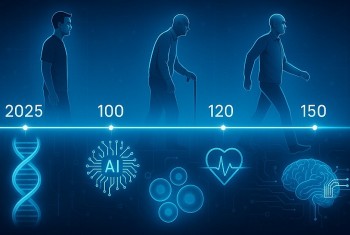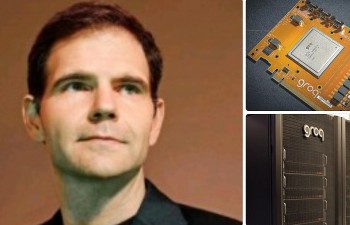The Longevity Divide: Will Only the Rich Live to 120?
 Who is Ethel Caterham? The Extraordinary Life of the World’s Oldest Living Person Who is Ethel Caterham? The Extraordinary Life of the World’s Oldest Living Person |
 Can China Extend Human Lifespan to 150 Years? Can China Extend Human Lifespan to 150 Years? |
In Silicon Valley and beyond, billionaires are funding moonshot ventures to defy aging itself. Names like Jeff Bezos, Peter Thiel, and Sam Altman are investing hundreds of millions into longevity startups promising to slow, stop, or even reverse aging. Companies like Altos Labs, Calico, and Loyal are racing to commercialize age-defying breakthroughs—from cellular reprogramming and CRISPR-based gene therapy to plasma transfusions and AI-enhanced diagnostics.
But as this biotech gold rush accelerates, a haunting question looms: Will the future of longevity be a luxury reserved for the wealthy few? For millions of aging Americans living on fixed incomes, struggling to afford basic healthcare, the dream of living to 120 feels less like science and more like fiction.
Is extreme longevity becoming the newest frontier of inequality?
 |
| The Escalator to 120 |
The Rise of a Billionaire-Funded Longevity Industry
The longevity sector is no longer fringe. It is now a high-growth, well-funded ecosystem. In 2023 alone, longevity biotech firms raised over $5 billion in venture capital globally. Much of that capital came from ultra-wealthy individuals who see aging not as a fact of life, but a solvable engineering problem.
-
Altos Labs, backed by Jeff Bezos, has reportedly recruited Nobel laureates to work on cellular rejuvenation techniques.
-
Calico, funded by Google’s parent company Alphabet, has spent years in stealth mode investigating biological aging at the molecular level.
-
Unity Biotechnology is developing drugs that clear senescent cells, aiming to delay age-related diseases like arthritis and vision loss.
These companies promise that within decades, it may be possible to extend healthy lifespan by 20, 30, even 50 years. But the initial beneficiaries of these breakthroughs will likely be those who can pay a premium for early access.
Price Tags That Lock Out the Middle Class
Consider the current costs:
-
A full-body MRI scan at a concierge longevity clinic: $2,500–$10,000.
-
Personalized gene therapy (experimental): upwards of $100,000.
-
Young plasma infusions (used off-label by some clinics): $8,000–$15,000 per session.
-
Membership at elite health optimization centers like Fountain Life or Human Longevity Inc.: $25,000+ annually.
Even basic access to cutting-edge diagnostics like whole-genome sequencing and AI-based biological age profiling remains expensive and largely unavailable in traditional Medicare-covered healthcare.
In short: longevity isn’t just becoming a science; it’s becoming a status symbol.
A Two-Tiered Future of Aging
If current trends continue, the future of aging could bifurcate:
-
Tier 1: The Optimized Elite — wealthy individuals with early access to age-slowing drugs, regenerative medicine, wearable data optimization, and elite medical teams extending their healthy years.
-
Tier 2: Everyone Else — aging under the current system: chronic disease, patchwork healthcare, and declining quality of life past 70.
This isn’t a hypothetical. A 2024 report by the Brookings Institution projected that access to health-extending biotechnologies will be concentrated in the top 5% of earners for at least the next two decades unless systemic reforms occur.
Medicare vs. Private Longevity Care
Traditional U.S. healthcare, especially for seniors, is structured around managing illness—not optimizing healthspan. Medicare covers disease treatment, not preventative aging interventions like senolytics or stem cell rejuvenation.
This creates a widening gap between what’s medically possible and what’s publicly accessible. In essence, the U.S. may be evolving a dual healthcare system: one for aging gracefully, another for aging technologically.
Global Comparison: How the U.S. Stacks Up
In Europe, public health systems are more aggressive in integrating preventative aging strategies. Scandinavian countries, for instance, are piloting national longevity clinics focused on metabolic health and digital monitoring.
In China, the government is pouring billions into longevity research, blending biotech with state-run programs. While elite longevity centers are rising in cities like Shanghai and Shenzhen, China is also exploring population-wide policies to address aging.
The U.S., in contrast, is largely privatizing the longevity revolution—shifting the burden of access to individual wealth and private insurance.
The Ethics of Immortality-for-Sale
Is it ethical to create life-extending treatments that are available only to the rich?
Critics argue that longevity technologies risk exacerbating existing inequalities:
-
Longer-lived elites may accumulate more wealth, power, and influence, entrenching generational inequality.
-
Resource allocation: Should limited scientific funding go to elite lifespan extension or universal care for the elderly?
-
Psychological and social impacts: A society where some live 40 years longer than others may fracture generational identity and social cohesion.
Supporters, on the other hand, claim that innovation must start somewhere—and that like smartphones or genetic testing, costs will eventually fall and benefit all.
But this assumes an equitable economic structure, which the U.S. does not currently have.
Seniors Speak: What Longevity Should Really Mean
For most Americans over 50, the dream is not immortality but vitality. Surveys by AARP and Pew Research show that older adults prioritize:
-
Maintaining independence
-
Avoiding chronic pain
-
Staying mentally sharp
-
Having access to affordable healthcare
To them, the longevity question is not "How can I live to 120?" but "How can I make 75 to 90 healthy, meaningful, and affordable?"
Yet public health investment doesn’t reflect this. Funding for preventive care and cognitive health lags behind high-tech biotech ventures.
Policy Questions We Must Confront
If we want longevity to be a universal benefit and not a luxury good, key policy areas need urgent attention:
-
Should Medicare expand to include preventive longevity care?
-
Can NIH and FDA adapt to support aging as a treatable condition?
-
Will there be price caps or regulation on longevity drugs and diagnostics?
-
Can we ensure equitable access to gene therapies and regenerative medicine?
Without proactive intervention, we risk creating a biologically stratified society.
Conclusion: Aging, Equity, and the American Future
The longevity revolution is not science fiction. It’s already under way. But whether it becomes a tool of empowerment or exclusion depends on how we structure access.
If only the wealthy can afford to add decades to their lives while others face declining care and rising costs, the result won’t just be unfair—it will be socially destabilizing.
A just longevity future means designing systems that value health equity over biotech elitism. It means treating aging not only as a scientific frontier but as a moral one.
Because the ultimate measure of progress won’t be whether billionaires live to 120, but whether everyone else can live well to 90.
Frequently Asked Questions (FAQs)
Q1: Can the average American realistically benefit from longevity technologies?
Not in the short term. Most cutting-edge interventions are expensive and experimental. Without public healthcare support, they remain out of reach for most people.
Q2: Will longevity breakthroughs eventually become affordable for all?
Possibly—if enough innovation and investment are matched with public policy aimed at equitable access, similar to how mobile phones became widespread.
Q3: Are there any public programs in the U.S. that focus on healthy aging?
Yes, but they are underfunded. Programs focused on lifestyle, preventive care, and cognitive health exist, but they lack the scale or sophistication of private longevity clinics.
Q4: What are the ethical risks of a longevity gap?
A biologically unequal society may amplify wealth and power divides, destabilize social systems, and challenge democratic fairness.
Q5: What should older adults focus on today if they want to age well?
Evidence-based practices: nutrition, regular exercise, sleep, cognitive stimulation, social connection, and regular checkups. These remain the most accessible and effective longevity tools today.
 Ranking the Longevity of 12 Zodiac Signs - Who is Forever Young? Ranking the Longevity of 12 Zodiac Signs - Who is Forever Young? When looking at the ranking of 12 zodiac signs of longevity, you will realize that no one is naturally beautiful, it is the result of ... |
 Top 10 Best Magic Foods That Can Help You Live Longer Top 10 Best Magic Foods That Can Help You Live Longer Eating and diets can play important roles in your healthy life and longevity. |
 10 Longevity Secrets of the Japanese People 10 Longevity Secrets of the Japanese People Why do the Japanese have the world's longest life expectancy? The Japanese live long lives because of their healthy eating habits, which include eating fish, ... |
 Top 5 Superfoods for Japanese People to Live Longer Top 5 Superfoods for Japanese People to Live Longer A lot of Japanese foods are regarded as superfoods because of their rich nutritional content and subtle flavor. |
 The Facial Features Reveal Your Short Lifespan or Longevity, According to Physiognomy/Science The Facial Features Reveal Your Short Lifespan or Longevity, According to Physiognomy/Science After centuries of research, Eastern physiognomists have identified the facial characteristics of both long- and short-lived people. |























